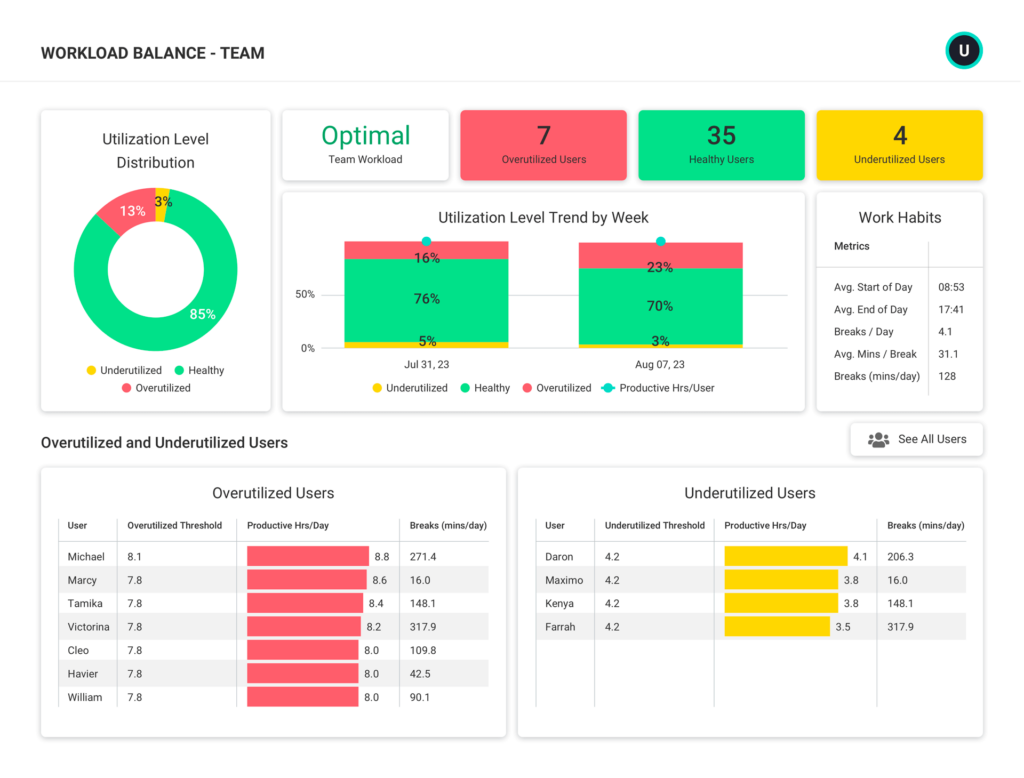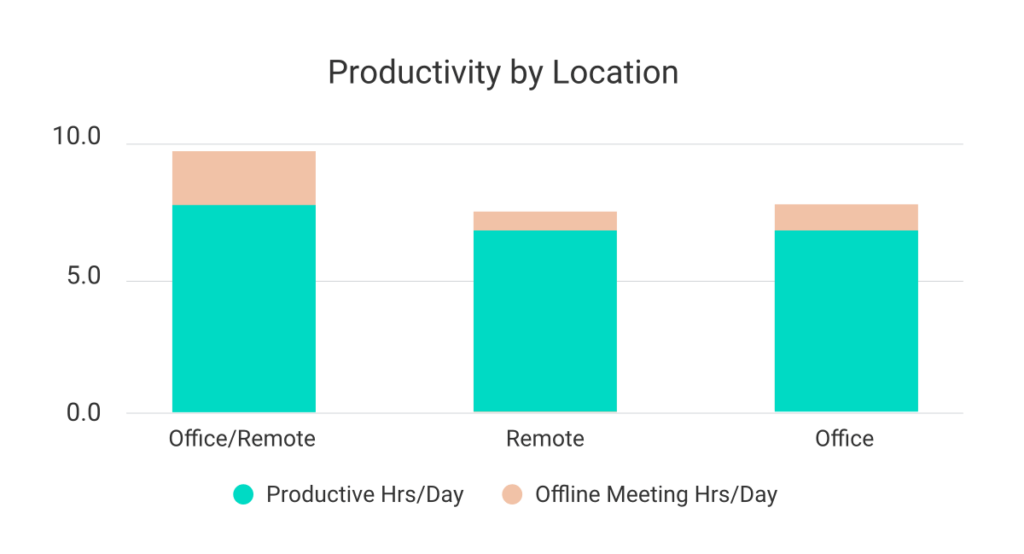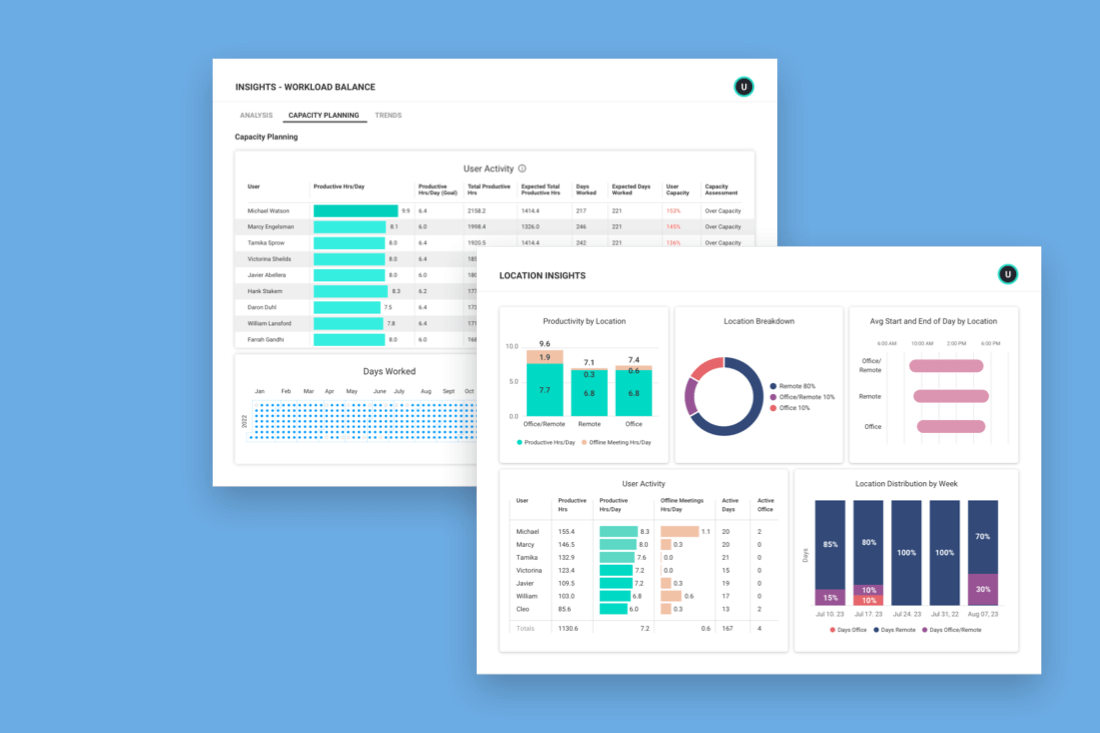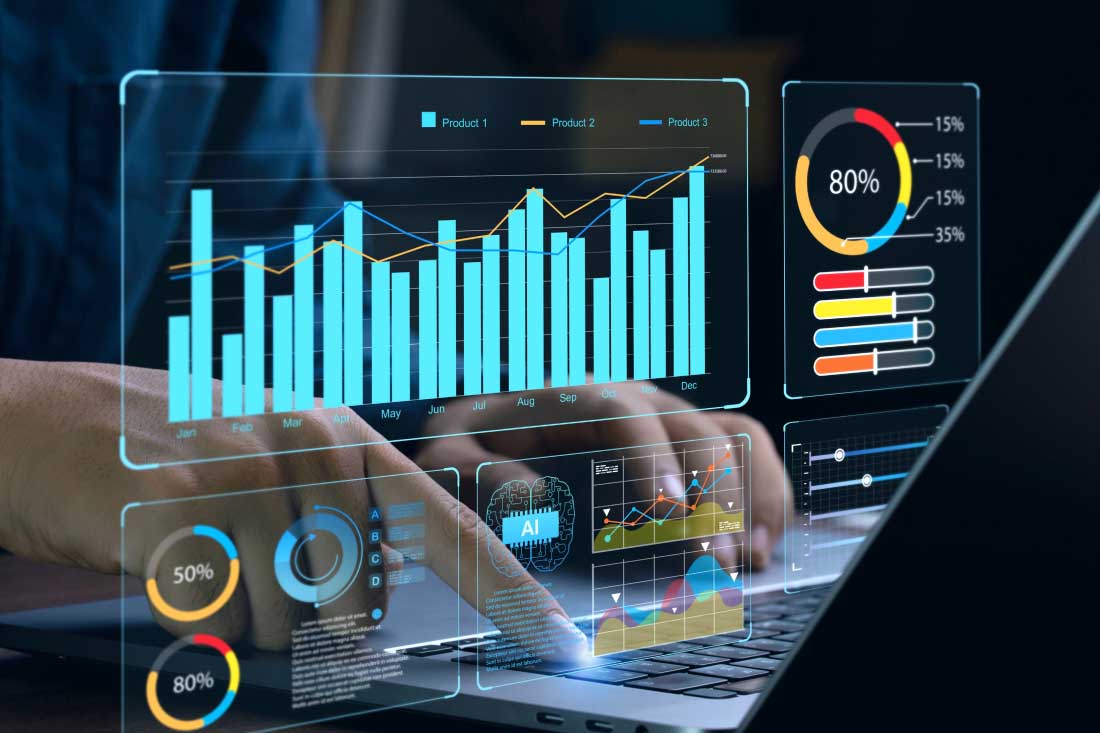Workforce analytics — also referred to as people analytics and HR analytics — has changed a lot in recent years. And there’s a lot you can do with it.
Human resources departments use HR data to improve the employee experience. Managers use workforce planning metrics to prevent burnout. Heck, many IT teams even turn to workforce analytics when they need to reduce SaaS spend.
The sheer volume of data can make it difficult to know where to start, but there’s no need to panic. Whether you’re just getting started with workforce analytics or want to make sure you’re using it correctly, several recent trends offer clues you can use to guide your strategy.
1. Savvy companies are investing in workforce analytics software
Once upon a time, companies installed employee monitoring software for the sole purpose of tracking employee activity. As recently as 2022, 77% of companies with remote workers were either already using or considering the software to keep tabs on workers.
Those days are gone.
OK, well not officially. Many businesses are trading surveillance-focused employee monitoring software for more comprehensive workforce analytics that includes additional insights about how employees work best. The former is used in secret; the latter is designed to be open and transparent.
In the modern digital workplace culture, workforce analytics software helps managers and executives understand how, where and when people work most effectively. The intent is not to store employee emails, calls, messages and videos — or to use them to inform performance reviews and termination decisions. Instead, the goal is to collect insights managers can use to support employees and the organization in general. And research shows it works: Companies that use workforce analytics report:
- Higher retention rates: 64% compared to 40% from companies who don’t use workforce analytics
- Better understanding of talent needs: 70% compared to 51% from companies who don’t use workforce analytics
- More satisfaction with overall HR: 78% compared to 60% from companies who don’t use workforce analytics
2. Workforce analytics tools are being built for and offered to employees
One particularly surprising trend in the workforce analytics space is happening among employees.
Many of today’s analytics tools now offer options for employee dashboards, and many workers are opting to use them. Personalized reporting lets people see how their work habits compare to peers, what times of day they’re most productive and even when they’re at risk of burning out and need to take more breaks.

In fact, personal insights have become such an important workforce metric that many companies are opting to give employees unfettered access to their data for a full month before their managers even see it.
3. Workforce analytics are shedding light on common assumptions
Many business leaders know to use workforce analytics to make data-driven decisions. You can use it to understand the needs, preferences and habits of various teams — and then leverage those insights to guide everything from 4-day work week policies to workforce capacity planning.
However, businesses are discovering that this only works if they’re truly open to letting the data steer them. At ActivTrak, we’ve seen many companies implement policies based on what they thought the workforce needed, only to discover the opposite was true once they started to take a measured approach. In fact, an astounding 80% of leaders regret post-pandemic return-to-office policies for this very reason. Many say they would’ve taken a different approach if they had a better understanding of actual office use.
Now, nearly three-fourths of US companies are already usinge or planning to implement a permanent hybrid work model — , and they want to make sure employees have what they need to be productive outside the office.
However, as organizations turn to workforce analytics to improve remote work productivity, many are finding one long held assumption — that meetings are a waste of time at work — isn’t always supported by the data. Turns out, too few in-person meetings can actually hurt productivity as remote workers scramble to get answers to lagging questions. If executives see big spikes in Zoom and Microsoft Teams during work-from-home days, they can use that data to revisit policies on when people should meet — and when it’s time to respect focused time for deep work.
4. Predictive workforce analytics is becoming more prominent
With standard workforce analytics, managers identify problems that have already occurred so they can decide how to fix them. Some companies are opting to move beyond this practice to determine what historical employee data can tell them about future outcomes.
This predictive workforce analytics approach has grown by almost 50% in the last three years. Why? Because companies can use it to gain a long-term competitive advantage in multiple areas. Some use it to predict and prevent burnout and voluntary turnover. Others study how long it took new hires to be fully onboarded in the past so they can plan for growth accordingly. Additional use cases for predictive workforce analytics include preparing for changes in leadership and optimizing future real estate investments — all by using historical data from within your own workforce.
5. Location-based capabilities are expanding
Some platforms, like ActivTrak, now offer location-based insights. These analytics technologies use location detection models to aggregate a variety of metrics that together tell a story of where employees are most productive.

These tools are often more accurate than traditional badging systems and tell a reliable story of remote and hybrid work habits. Companies can use these tools to understand when long commutes get in the way of productivity, who works best in which environment and how current hybrid work policies are impacting performance.
Get ahead of workforce analytics trends with ActivTrak
There’s a reason workforce analytics trends are changing: More organizations are relying on employee data to improve productivity and guide policies. And they’re inevitably learning all kinds of valuable lessons along the way.
That’s why ActivTrak’s workforce analytics software was designed from the ground up to help leaders, managers and employees work better together. We’re constantly fine-tuning our features and capabilities to give you the insights you need — whether that means optimizing for remote work, deciding how to handle big changes or simply understanding what your people need to do their best work.
Whether you’re just getting started with workforce analytics or want to get ahead of the latest trends, ActivTrak can help.
Request a demo to learn how ActivTrak can help you boost productivity, increase engagement, lower turnover and more.





